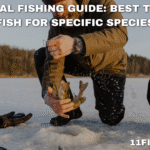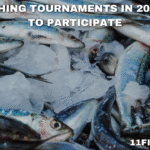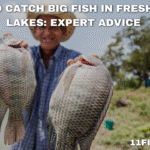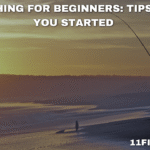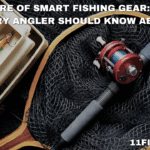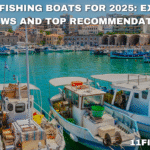
Fishing is not only a cherished tradition but also a critical source of livelihood and nutrition for millions worldwide. However, overfishing, habitat degradation, and bycatch have placed immense strain on marine ecosystems. As anglers, adopting sustainable fishing practices is essential to preserving aquatic biodiversity and ensuring the longevity of fish populations. This guide explores how to fish responsibly, minimize environmental impact, and contribute to the health of our oceans.
What is Sustainable Fishing?
Sustainable fishing refers to methods and practices that maintain fish populations, protect marine habitats, and reduce environmental harm. It emphasizes balancing human needs with the ecological health of aquatic ecosystems, ensuring that future generations can continue to enjoy fishing and its benefits.
Core Principles of Sustainable Fishing
Adhere to Fishing Regulations
Obtain the necessary fishing licenses and strictly follow local regulations, including size limits, catch quotas, and seasonal restrictions.
These rules are scientifically designed to prevent overfishing and promote species recovery.
Practice Catch and Release Responsibly
Use barbless hooks and wet your hands before handling fish to minimize stress and injury.
Keep the fish in the water as much as possible and release it quickly to improve survival rates.
Avoid Overfishing
Take only what you need and stay within legal catch limits.
Overfishing depletes fish stocks, disrupts ecosystems, and threatens food security.
Use Selective and Eco-Friendly Gear
Opt for fishing gear that reduces bycatch, such as circle hooks, which are less likely to harm fish, or turtle excluder devices (TEDs) to protect marine turtles.
Avoid destructive methods like bottom trawling, which damages seafloor habitats.
Target Sustainable Species
Focus on fish species that are abundant and not overexploited.
Avoid targeting endangered or vulnerable species, and refer to sustainable seafood guides for recommendations.
Protect Marine Habitats
Avoid damaging sensitive ecosystems like coral reefs, seagrass beds, and mangroves.
Be cautious when anchoring boats and always dispose of waste properly to prevent pollution.
Reduce Plastic and Waste
Minimize the use of single-use plastics and participate in beach or waterway cleanups.
Plastics pose a significant threat to marine life through ingestion and entanglement.
Sustainable Fishing Techniques
Fly Fishing
Fly fishing is inherently sustainable when practiced as catch-and-release.
Use artificial flies that mimic natural prey without harming the environment.
Spearfishing
Spearfishing allows for selective targeting of fish, reducing bycatch.
Always comply with local regulations and avoid overharvesting.
Trap and Pot Fishing
Traps and pots can be sustainable if designed to allow undersized or non-target species to escape.
Handline Fishing
Handlining is a low-impact method that reduces bycatch and habitat disruption.
Choosing Sustainable Seafood
When purchasing seafood, look for certifications that guarantee sustainability:
MSC (Marine Stewardship Council): Indicates seafood from well-managed, sustainable fisheries.
ASC (Aquaculture Stewardship Council): Certifies responsibly farmed seafood.
Seafood Watch: Provides science-based recommendations for sustainable seafood choices.
The Role of Anglers in Marine Conservation
Support Conservation Initiatives: Contribute to or volunteer with organizations dedicated to protecting marine ecosystems.
Promote Awareness: Educate fellow anglers about sustainable practices and their importance.
Report Violations: Notify authorities of illegal fishing activities or habitat destruction to help enforce regulations.
Why Sustainable Fishing Matters
Sustainable fishing ensures the health of marine ecosystems, supports coastal communities, and maintains biodiversity. By adopting responsible practices, anglers can help combat overfishing, reduce bycatch, and protect critical habitats. Every action, no matter how small, contributes to the broader goal of ocean conservation.
Final Thoughts
Sustainable fishing is a shared responsibility that requires commitment and awareness. By following these practices, anglers can enjoy the thrill of fishing while safeguarding the future of our oceans. Together, we can create a balance between our passion for fishing and the need to protect marine life.
Pro Tip: Stay informed about the specific challenges facing your local fishing areas and adapt your practices to address them. Let’s fish responsibly and ensure the oceans thrive for generations to come.

